Trip to the Basque Country (part II): Pasajes
Hello once again everyone! This is the second post I've dedicated to my first trip (in poverty), to the Basque Country, (Euskadi or Euskalherria, however you like). What's promised is debt, so I'm going to talk to you about "PASAJES", (Pasajes de San Pedro, Pasajes de San Juan (o Pasaia Donibane) and Trintxerpe) because there's a quarter known as Pasajes Antxo where you'll find the import and export port. Let's go!
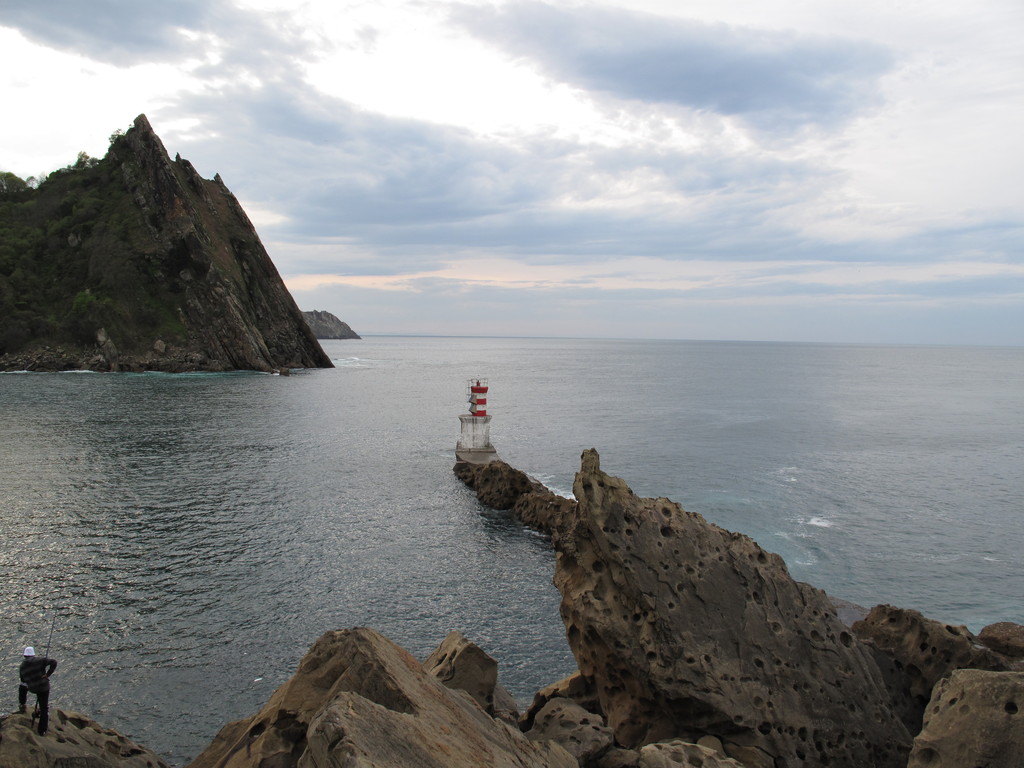
I'm almost certain that many of you have heard about the Fifth Galician Province. During the "internal exodus" (which is what they called the mass emigration in the '60s), many Galicians (and Andalusians, people from Extremadura... ), emigrated to other parts of Spain, especially to the Basque Country and Catalonia. There was also emigration to foreign countries, such as Germany, Switzerland, Holland, France, the United States, Argentina, Chile, Brazil, Uruguay. Not everyone, but a huge part of the Galicians chose the Basque Country, which they did because they dedicated their lives to fishing. They were men of the sea who established themselves on the outskirts of the most important ports (almost always with their families). This was the case with PASAJES and ONDARROA, (where I will talk about in a different post).
There, there was an enormous fleet with many more boats than now. In Pasajes, a Galician colony truly flourished. It wasn't strange to be able to find a bar with a tell-tale name, such as "El Coruña”. The Galician language cohabits these streets along with Basque and Castilian Spanish. Today, the descendants of those who remained, (many returned when they reached retirement age), are "educated". They adapted themselves to their "Basquisation". Shall I explain myself? You'll be able to see it in their surnames. Those who have surnames such as Garcia, if you like, would change it for "Gartzia", like that. El Manolo; Imanol, Jose; Joseba... Different strokes for different folks.
From the centre of the city of San Sebastian, you can reach Pasaia straight away. There's good internal transport every few minutes. The mythical TOPO (as they call it here), which is a type of open air metro, don't reach this zone, at least for the moment. If you choose the Amara station (which is very punctual and modern), they would drop you in the Herrera station, and you'd have to get there on foot. If you like to walk, put on your shoes and ask how to get to Rome. This TOPO is being buried by new stations, extending its line to be able to function in other zones.
My parents and I did this route by car. We passed the Alto Mirac which has Juan Mari Arzak, its famous restaurant. Follow this route and leave the neighbourhoods of BIDEBIETA and AZKUENE behind, and climb a steep street to your left, which would have been flourishing during the time of the Galician settlers, with bars, shopping centres, a public college, and a football pitch. We continued until we got to the very TRINTXERPE (always with an "X"). They've started to call this street (and this is not a joke), "the dollar city", because they earn a lot of money, which can be observed in their prosperity.
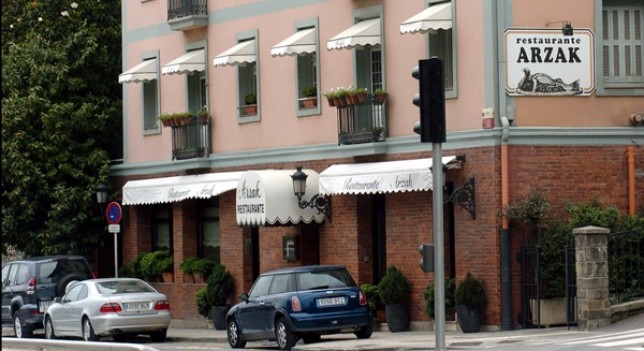
TRINTXERPE is a long street, but not completely straight. The port area (which is a natural canal) is on the right. It originated at the very beginning, at the height of AZKUENE, with enormous and ugly ships of varying services, transport, etc. So now, it was starting to seem semi-abandoned and in a state of recuperation and rehabilitation. Today, everything has changed a lot and there's a sport's area in the port. To the left, a little bit further away, the Nautical School will catch your eye. It's located in the first part of a hill, of which if you follow you'll reach the Faro de la Plata (a lighthouse), on Mount Ulia. When they opened it (which reminds us of Franco's visit), it was a very modern and cutting-edge building. It has a hexagonal base and it has a tall and pointed tower that they colloquially refer to as EL PIRULI. It was the first planetarium to be made in Spain. Many generations of young people, budding and aspiring sailors. It's an area that, as you can believe, is very well known amongst Galicians.
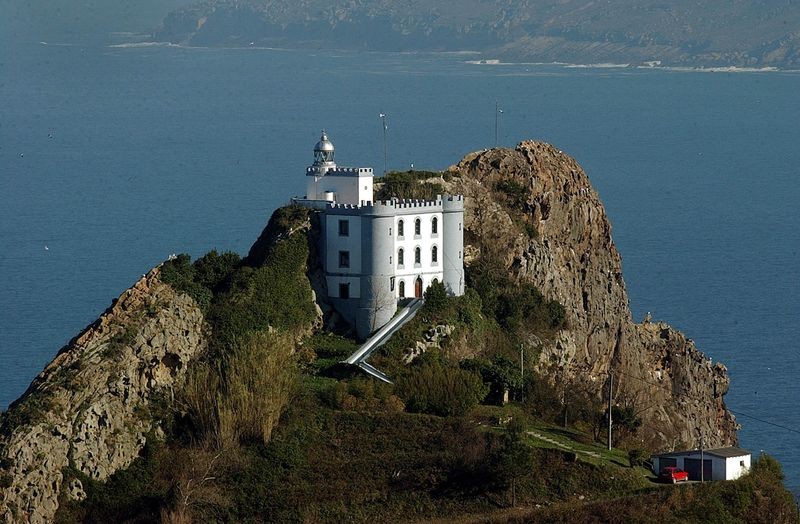
Source Faro de la Plata.
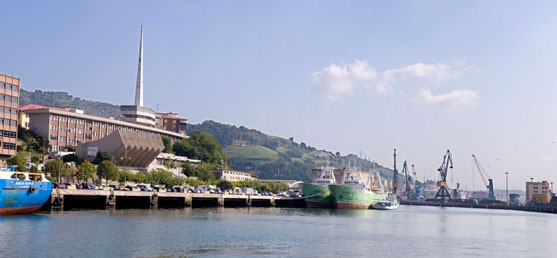
We parked at the entrance to Pasajes de San Pedro. There was a slip way where they unload fishing right there. It's a very small village, surrounding a church. There was a ball court, where a lot of Basque pelota games have been played, with a lot of atmosphere. The internal streets are very narrow and long. Previously, the sea used to reach the houses, like Venice. They built a "filling" (or as they said in Galician, "recheo"), opening up a walkway so you can continue walking from the inside to the outside. On the inside, the streets are cobbled and dark. The sun never ever comes out and you can tell. There are passageways between the buildings, so narrow that you can barely fit a person. Before the construction of the walkway, the streets were submerged in water. You cannot overlook the house of Admiral Blas de Lezo. You'll recognise it straight away, because of its family coat of arms, which signifies its importance. You have to walk until you reach the La Torre (or Torre Atxe). If you choose the walkway, you have bars and restaurants where you can have a snack and spend some time. The Tower is a very wide opening which you can appreciate when you leave the old town: you'll see a jetty and a spring (which runs out from a cave), in honour of the Virgin. You can sit and contemplate the tiny town in front of you, with the Monte Jaizkibel or continue on your way. You'll find downwards slopes (everyone has their favourite) where children can go swimming, (Ondartxo) when summer arrives. To the left, a little further away, there's a building with a new open air church: it's on the top and it's the headquarters of the rowing club, it's true! It's a sport that has a lot of support, so much so that they've dragged the sport into delirium. The rivalry between the "traineras" (small fishing boats used for racing) of San Juan and San Pedro is a serious one. The "trainera" of San Pedro is colloquially referred to with the curious name Libia; and that of San Juan is called Erreka. Walking on, you'll reach the spot where they repair the boats, the old shipyard. Today they have converted it into a museum, with traditional and natural activities. The star project is the construction of Nao San Juan, which is an exact replica of the boat that was made here exactly 500 years ago. The last section, was also a family area for swimmers and sunbathers during the summer. The mountain rises to your left, and a lot of altitude and danger of collapse. It's very common to see fans of fishing. If you stick it out till the end, you will see the mythical entrance to the Port of the Pasajes. It's famous because of its difficulty to manoeuvre in and out of it, especially in bad weather. You'll see a very long and indeterminable staircase, that will take you to the Lighthouse and Monte Ulia. If you fancy going up until the end of the bay, you have to go down instead of up, but you have to avoid it on days with bad weather. The waves break and hit the quay from both sides.

Fuente Jetty of Pasajes de San Juan.
We went back towards the La Torre jetty with the intention of getting a motor boat. To cross to Pasaia de San Juan takes two minutes at most. It's all very, very picturesque. They film a lot of news there, you'll recognise it when the time comes without a doubt. When we got off the boat, you'll find one narrow, cobbled and tiny alleyway. You can go in two directions, you can't get lost. Towards the left you'll arrive once again to the natural entrance of the cove. If you go to the right, I would suggest that you visit the museum Victor Hugo House. The writer lived there in 1843. Entry is free and it has a permanent exhibition about the man on the second floor. After having a look a round, my parents decided to have something to eat. They chose the restaurant Casa Camara, but there are some more (like Txulotxo). All of them are great. Casa Camara, has the tradition of a very serious family business that no one questions (well, nearly no one). In there, there was a tank in the middle of the dining room and you could see how they caught the lobsters. A very highly recommended dish would be the hake's neck for two, if they have it. What you can do, which is obligatory (! ), is have your meal alongside a Basque cider or txakoli. It's a white wine that's served very, very cold. Please! Do not order an Albariño or a Ribeiro! The desserts are the absolute best. You'll be able to observe "a Basque family" in action, open people in their natural state, who are direct and prefer to use "tu" instead of "usted" in Spanish ("tu" is more familiar and informal than "usted", and usually servers in restaurants use "usted" with customers).
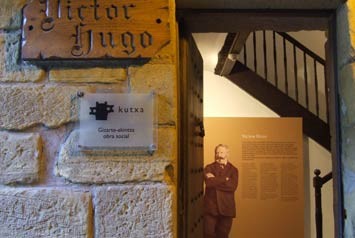
Be warned! All of the Basque Country is quite expensive. You can always look at the half portions instead, so your eyes don't pop out of your head when you see the bill. Casa Camara is very good and reasonable. But, it does depend on what you consider to be reasonable, of course. I mean that they're no Arzak prices, which is a 3 Michelin star restaurants.
After eating, we had to do another visit. My parents had found the Old Town where we could have a small dinner. At sunset, they took me to the Park of the Alderdi Eder Gardens to play a little bit. We parked in the Gros neighbourhood and we walked to the Kursaal building. There they celebrate, as you'll know, the Film Festival, instead of the Victoria Eugenia Theatre, the old headquarters of the classic event. This is the legendary building that's known as "los cubos de Moneo, referring to the architect from Navarre who designed it, Rafael Moneo. He was the winner of the project in a competition between 6 architects. Its inconvenience, they say, is the high cost of keeping it clean. It has a "crystallised" feel to it, with sheets of glass on it. Imagine, (hehe), how many window cleaners they need and how many people in harnesses would be hanging off it. This place, that was previously the Grand Kursaal (which was a casino, etc) was demolished in 1972, and it was empty and fenced off next to the sea for two decades.
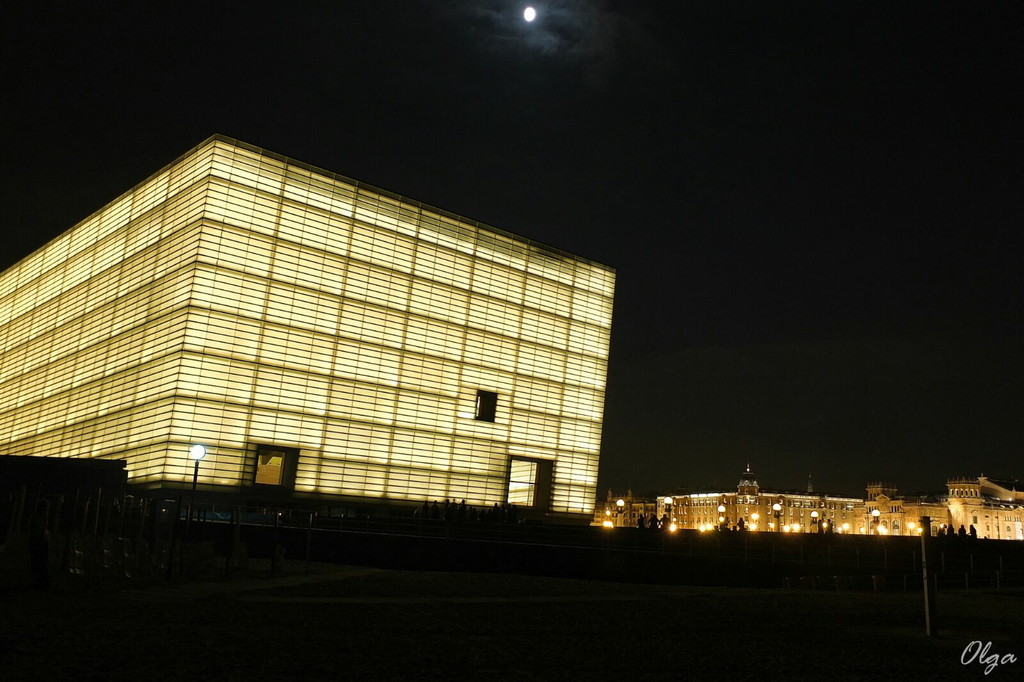
After moving through the Kursaal bridge, (there are a few in the city, of a Parisian style), we arrived at the boulevard. It's wide, with gardens in the centre and a car park. There you'll be able to see a beautiful music kiosk. It's modernist, and (Did I dream this? ) it's attributed to the Eiffel tower, the poor engineer.
San Sebastian is traditionally the city of great ice cream parlours, so each one of us wolfed down an ice cream with a cone. If you can, try one in Los Italianos, although there are loads. The lemon ice cream is addictive, or that mixed with chocolate. My parents, (exhausted), had a cappucino. If you're thirsty I recommend trying a natural lemon slushie.
In the Old Town they say that it has the biggest density of bars per square metre in all of Europe. I don't know if it's actually true, but there are a LOT. Everything is good quality, (well, they say that), from a bite to eat, to a ham or cheese sandwich. If you want to eat a big dish or have dinner, you can do that as well! And, it's amazing! The best thing you can do is to faithfully fulfill the ritual of the "pinchos". You have to try them, even at least once. The bar counters are a spectacle to see, smell and everything. The bad part is that the customer won't know what to get! Normally it's accompanied by a pincho/tapas with a zurito, which is a small beer, or a glass of wine. Their competence is amazing, so no one who goes there will have low quality. Now I'll tell you what a pintxo pote is: the combine a tapas plate with a drink, or your pay for the drink and they'll give you a tapas, depending on the establishment. I can't not mention the tradition in the Old Town that has been lost: there were various peanut stalls, and the smell extended all the way down the street. They served them freshly toasted, (also potatoes), in warm packets and they were weighed in grams.
And that's it for today, folks. Thanks for reading again, I hope you've enjoyed. In the following entry, I will talk to you about the frontier area. As you already know: share, comment, whatever you like. See you for my next post!
Photo gallery
Content available in other languages
Share your Erasmus Experience in San Sebastian!
If you know San Sebastian as native, traveler or as exchange student... share your opinion on San Sebastian! Rate different characteristics and share your experience.
Add experience →






















Comments (0 comments)